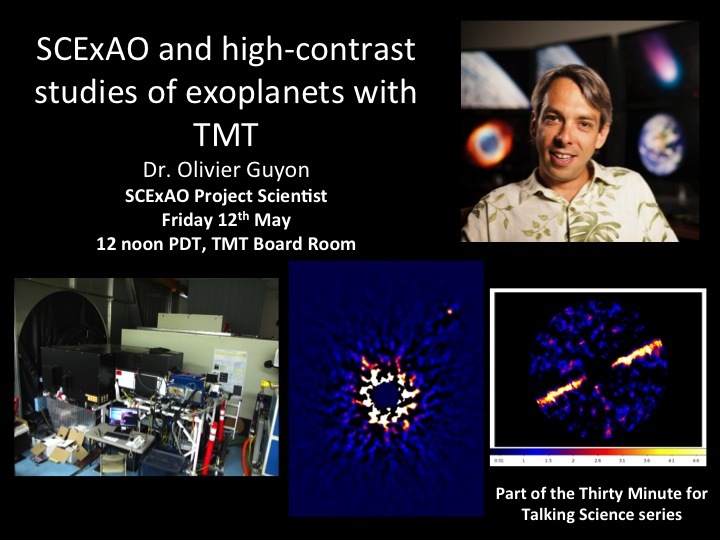


Oliver Guyon who is the SCExAO Project Scientist will discuss TMT capabilities to image habitable planets. Interested to join remotely. Contact Christophe Dumas at cdumas@tmt.org.
Several thousand planets have been identified by indirect detection techniques monitoring the flux and spectra of stars (transit and radial velocity techniques). We know now that a large fraction of stars host rocky habitable zone planets. Direct imaging and spectroscopic identification of biomarkers in their atmospheres will be required to search for signs of biological activity on exoplanets.
Thanks to recent advances in high contrast imaging (wavefront control, optical starlight suppression), direct imaging of rocky planets in the habitable zones of nearby M-type stars will be possible with the upcoming Extremely Large Telescopes (ELTs). For M-type stars, the reflected light contrast between a habitable planet and the star is approximately 1e7, as opposed to 1e10 for a Sun-Earth system. I will show that this contrast level will be accessible with ELTs, and that thanks to their angular resolution, planet light can be well separated from starlight.
I will describe ongoing efforts at the 8m Subaru Telescope to validate key technologies and approaches, and understand system-level design trades. The Subaru Coronagraphic Extreme Adaptive Optics (SCExAO) instrument is a flexible platform, designed to evolve towards a TMT instrument offering the sensitivity to acquire spectra of habitable planets around nearby M-type stars.
